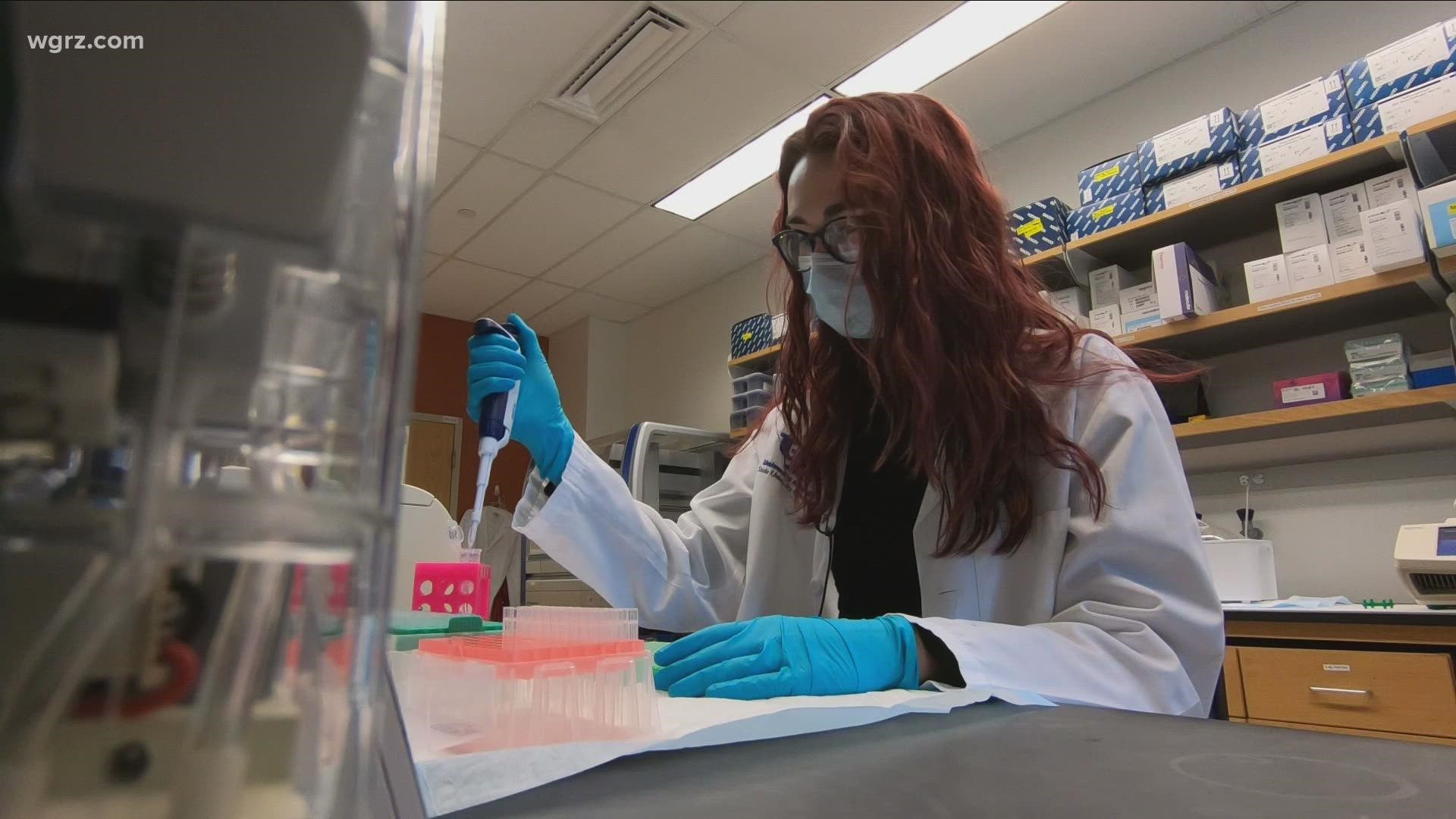BUFFALO, N.Y. — A specially equipped lab on UB's Buffalo-Niagara Medical Campus is now helping to track the course of COVID with its variants and perhaps helping to guide decision-makers as they apply policy during the pandemic.
You'd probably miss the sign on this building on the Buffalo Niagara Medical Campus. But the Center of Excellence in Bioinformatics and Life Sciences houses a unique resource that is making a difference in the ongoing battle against COVID.
The Core Sequencing Facility blends certain disciplines as Center Executive Director Dr. Norma Nowak explains, "Bioinformatics really is the intersection of math, computer science, and biology."
And last summer the state decided to harness that combination to look for the variants or strains of COVID inpatient lab samples that they now get from the Erie County Health Department, local hospitals, and a private lab. Co-Director Dr. Jennifer Surtees says, "So if you think about your genome or the CO-V 2 genome as being the instruction manual for the organism."
Then after a series of complicated lab processes with extraction, conversion, replication, and assembly of the virus's genetic sequence, there is the analysis.
Dr. Surtees says, "The next step is to then compare that sequence - that instruction manual from that particular sample back to the original Wuhan virus and see where there are changes - where there are typos that happened."
That's because viruses like COVID mutate. So over time, the technology in the lab has improved to help researchers keep up. Lab Manager Don Yergeau says "When I first started ten years ago doing sequencing it usually took about a month to do one or two samples. On this instrument - the Nova seq we have here which is very high proof - we can do those same types of samples in 24 hours. Uses lasers, use high-speed cameras - it's a very fast instrument."
So how do they use that bio-information? Well, it can help with determining transmission patterns. And for practical application, Surtees says "It allows vaccine developers to be more intentional with the types of mRNA for instance that they include in vaccines.: As we're sequencing and finding mutations in these genes - it helps the basic scientists to get a better understanding of how this virus works. It's a new virus. We don't know that much about it."
While that information goes to the state, it also goes worldwide as it's shared with all researchers in the GISAID program. Surtees says, "This is a global database that has been receiving samples of SARS COV-2 from. I think actually the very end of December 2019 is when the very first SARS COV-2 was uploaded from China."
That realization that they may also be a resource for political decision-makers is hitting lab staffers as well. Yergeau says, "We don't necessarily dictate that policy but we can provide the information for making an informed choice." And lab technician Alyssa Pohlman said, "Nationally and internationally this is a huge hub and people don't realize that it exists in Buffalo, New York."
It's also interesting that this scientific seed if you will from which all this technological know-how and now this crucial work for COVID emerged was actually planted here at UB back in the 1990s.
With state and federal funding commitments which began during Governor Pataki's administration, and then ongoing collaboration with hospitals and local research institutions, the Buffalo - Niagara Medical campus and the genomic sequencing core facility are positioned to do much more in the future.
Dr. Nowak says, "All of the things we do here - whether it's cancer, COVID, heart disease, asthma, autism...all of those differing disorders can be investigated using genomic sequencing."
RELATED STORY:

